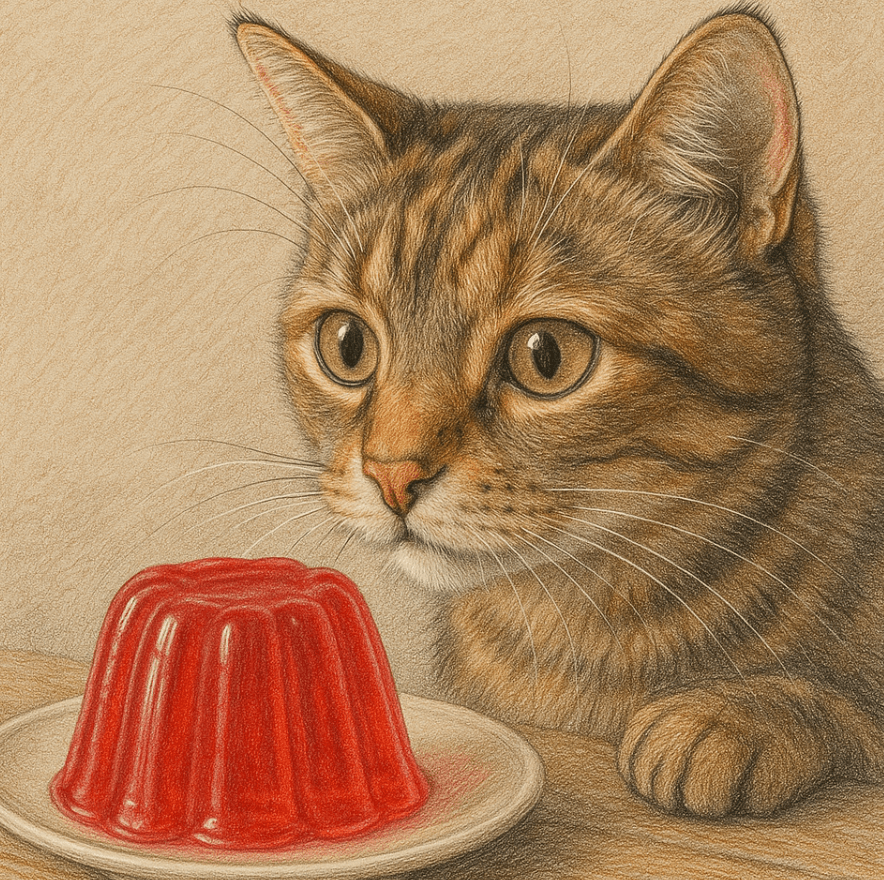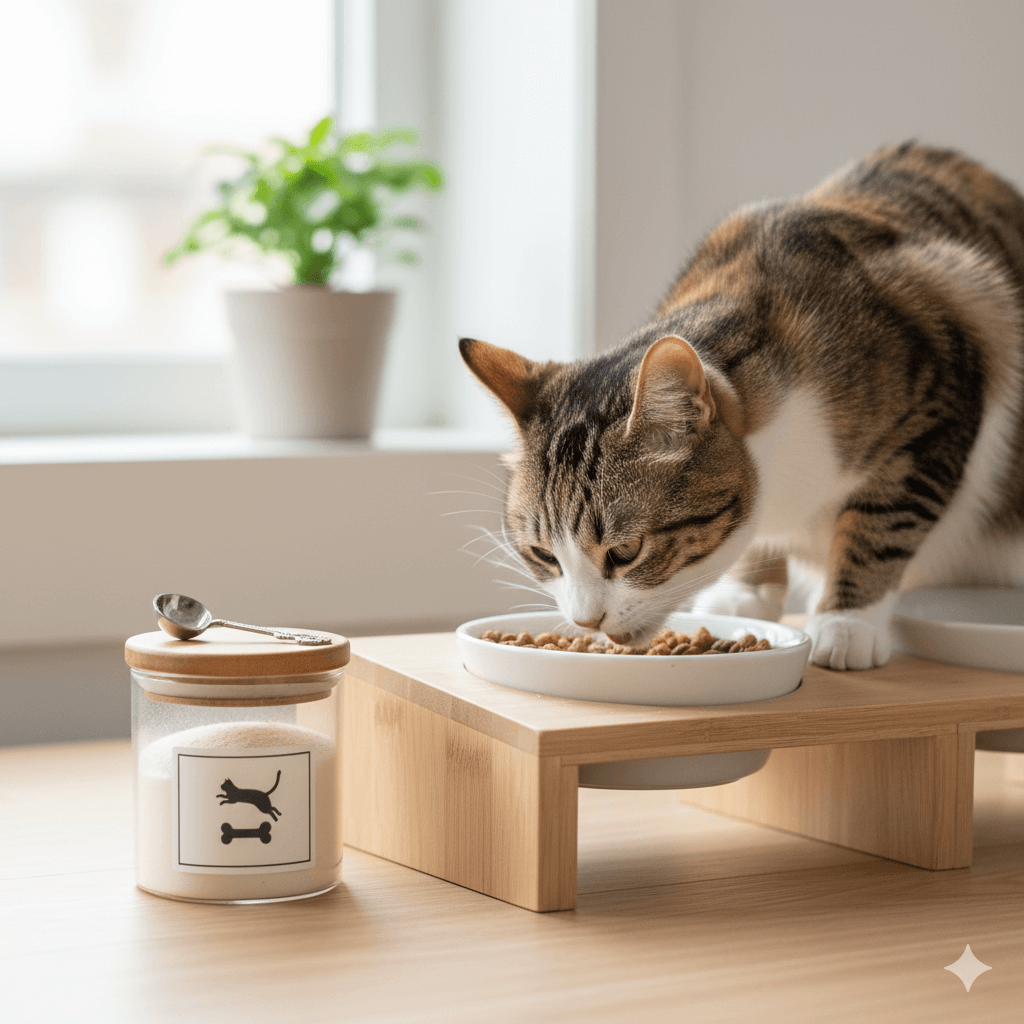Can Cats Eat Jello? What You Need to Know
Jello, with its wobbly texture and sweet flavors, is a fun treat for humans, but can cats enjoy it too? While it might seem harmless to share a bite of this colorful dessert with your feline friend, there are important factors to consider before letting your cat indulge. Cats have unique dietary needs as obligate carnivores, meaning their bodies are designed to thrive on animal-based proteins rather than sugary or plant-based foods. In this blog post, we’ll explore whether jello is safe for cats, potential risks, and healthier alternatives to keep your furry companion happy and healthy.
Potential Risks of Feeding Jello to Cats
While jello may look like an innocent snack, it contains ingredients that could harm your cat if consumed in large quantities or frequently. Understanding these risks is crucial for ensuring your pet’s safety.
High Sugar Content:
Most jello varieties are packed with sugar, which can lead to obesity, diabetes, and dental issues in cats over time.Artificial Sweeteners (Xylitol):
Some sugar-free jello products contain xylitol, a toxic substance that can cause severe health problems, including liver failure, in cats.Digestive Upset:
The gelatin and additives in jello can upset your cat’s stomach, leading to vomiting, diarrhea, or discomfort.Lack of Nutritional Value:
Jello offers no nutritional benefits for cats and may displace space in their diet meant for essential nutrients.Choking Hazard:
Large chunks of jello could pose a choking risk, especially for smaller or more excitable cats.
These risks highlight why jello should be approached with caution when it comes to your cat’s diet. Always prioritize their health over curiosity about human foods.
Is There Any Benefit to Giving Jello to Cats?
Although jello isn’t inherently beneficial for cats, some scenarios might make it seem appealing as an occasional treat. However, these “benefits” come with caveats.
Hydration Boost:
Jello contains water, which could temporarily increase your cat’s fluid intake if they’re reluctant drinkers.Encouraging Appetite:
A small amount of plain, unsweetened gelatin might entice picky eaters to try new foods—but only in moderation.Interactive Playtime:
The texture of jello might intrigue curious cats, providing short-term entertainment during supervised play.Customizable Recipes:
Homemade versions using cat-safe ingredients (like bone broth) can offer a safer alternative to store-bought jello.Bonding Experience:
Sharing a specially prepared treat can strengthen the bond between you and your cat—if done responsibly.
While these points suggest minor advantages, they must be weighed against the potential downsides of feeding jello to your cat.
Check this guide 👉Can Cats Eat Grasshoppers? Best 7 Expert Tips!
Check this guide 👉Can Cats Eat Chicken Liver? Best 7 Expert Tips!
Check this guide 👉Can Cats Eat Ladybugs? Best 7 Expert Tips!

Ingredients in Jello Harmful to Cats | Safer Alternatives for Cats |
|---|---|
High sugar content | Plain cooked chicken or turkey |
Artificial sweeteners (xylitol) | Cat-safe wet food or treats |
Gelatin with added preservatives | Homemade bone broth gelatin snacks |
Food coloring and dyes | Unflavored gelatin mixed with water |
Citric acid or acidic flavors | Small pieces of fresh fruits (safe types) |
How to Safely Introduce Jello to Your Cat
If you decide to give your cat jello, it’s essential to take precautions to minimize risks. Follow these guidelines to ensure a safe experience.
Choose Unsweetened Varieties:
Opt for plain, unflavored gelatin without added sugars or artificial ingredients.Avoid Artificial Additives:
Steer clear of jello containing food coloring, preservatives, or flavor enhancers.Make It at Home:
Prepare homemade jello using cat-safe liquids like diluted bone broth instead of sugary juices.Offer Tiny Portions:
Give your cat only a small taste to avoid overwhelming their digestive system.Monitor for Reactions:
Watch for signs of gastrointestinal distress or allergic reactions after offering jello.
By following these steps, you can reduce the likelihood of adverse effects while satisfying your cat’s curiosity.
Signs Your Cat May Be Struggling After Eating Jello
Even with precautions, complications can arise if your cat consumes jello improperly. Watch for these warning signs to act quickly if something goes wrong.
Vomiting or Diarrhea:
These symptoms may indicate that your cat’s digestive system is struggling to process the jello.Excessive Lethargy:
Sudden tiredness or lack of energy could signal a negative reaction to unfamiliar ingredients.Loss of Appetite:
Refusal to eat regular meals might mean your cat feels unwell after consuming jello.Increased Thirst or Urination:
This could point to blood sugar imbalances caused by high sugar content in the jello.Difficulty Breathing:
In rare cases, ingestion of toxic substances like xylitol could lead to respiratory distress.
Recognizing these signs early allows you to seek veterinary care promptly, preventing further complications.
Common Mistakes to Avoid When Feeding Human Foods to Cats
Feeding human foods to cats requires careful consideration to avoid mistakes that could endanger their health. Here are some pitfalls to watch out for.
Assuming All Human Foods Are Safe:
Many foods, like chocolate, onions, and grapes, are toxic to cats and should never be shared.Ignoring Portion Sizes:
Even safe foods can cause harm if fed in excessive amounts, disrupting your cat’s balanced diet.Overlooking Ingredients:
Hidden additives like xylitol or salt can harm cats, so always read labels carefully.Neglecting Individual Tolerances:
Some cats may have allergies or sensitivities to certain foods, requiring personalized attention.Skipping Veterinary Advice:
Consulting a vet before introducing new foods ensures your cat’s safety and health.
Avoiding these mistakes ensures a safer and healthier experience for your cat.
Healthier Alternatives to Jello for Cats
If you’re looking for safe and nutritious treats to spoil your cat, there are plenty of alternatives that cater to their dietary needs.
Cooked Chicken or Turkey:
Lean meats provide protein and essential nutrients without unnecessary additives.Cat-Safe Fruits:
Small pieces of blueberries, watermelon, or banana can serve as occasional treats.Homemade Broth:
Diluted, low-sodium chicken or beef broth hydrates and satisfies without added sugars.Commercial Cat Treats:
Specially formulated treats are designed to meet your cat’s nutritional requirements safely.Freeze-Dried Meat Snacks:
These treats mimic raw meat textures and flavors, appealing to your cat’s natural instincts.
These alternatives allow you to cater to your cat’s preferences while keeping them safe.
Understanding Your Cat’s Natural Diet and Preferences
Cats are obligate carnivores, meaning their bodies require specific nutrients found primarily in animal-based proteins. Understanding their natural diet helps explain why jello isn’t ideal.
Protein-Rich Needs:
Cats thrive on diets rich in animal proteins, which provide essential amino acids like taurine.Limited Carbohydrate Tolerance:
Unlike humans, cats lack efficient enzymes to break down carbs, making sugary treats like jello less digestible.Hydration Importance:
Cats often don’t drink enough water, so moisture-rich foods like wet cat food are better choices than dry snacks.Instinctual Cravings:
Cats prefer savory, meaty flavors over sweet ones, making jello less appealing naturally.Nutrient Balance:
A balanced diet includes vitamins, minerals, and fats tailored to feline physiology, which jello cannot provide.
By recognizing these traits, you can better align your cat’s diet with their biological needs.
Frequently Asked Questions About Cats and Jello
Can kittens eat jello?
No, kittens have sensitive digestive systems and should avoid jello entirely. Stick to kitten-specific foods.
What happens if my cat eats a lot of jello?
Large amounts of jello can cause digestive upset, weight gain, or even toxicity if it contains harmful ingredients.
Are there any flavors of jello safe for cats?
Plain, unsweetened gelatin made with cat-safe liquids (like bone broth) is the safest option. Avoid flavored varieties.
How often can I give my cat jello?
Jello should be given sparingly, if at all, and never as a regular part of their diet.
What should I do if my cat accidentally eats jello?
Monitor them closely for adverse reactions. If they show signs of illness, contact your veterinarian immediately.
Prioritizing Your Cat’s Health Over Curiosity
While jello might seem like a fun and quirky treat for your cat, it’s not a suitable addition to their diet due to its high sugar content, artificial additives, and lack of nutritional value. Although occasional, carefully prepared portions of homemade gelatin snacks might be acceptable, commercial jello poses significant risks. By focusing on species-appropriate foods and consulting your veterinarian, you can ensure your cat stays healthy and happy. Remember, your feline friend relies on you to make the best dietary choices for them—so always prioritize their well-being above all else.
Understanding Bone Supplement for Cats: Best 7 Expert Tips! – Safe, vet-approved guidance for strong feline bones & balanced nutrition.
Bone Supplement for Dogs: Best 7 Expert Tips! – Expert guide to calcium, collagen & bone health for every life stage.
Understanding Can Cats Get Sunburn: Best 7 Expert Tips! – Protect your feline from UV damage with vet-backed prevention strategies.
How to Train a Seizure Alert Dog: Best 7 Expert Tips! – Learn expert-backed steps to nurture natural instincts into reliable, life-saving seizure alerts.




